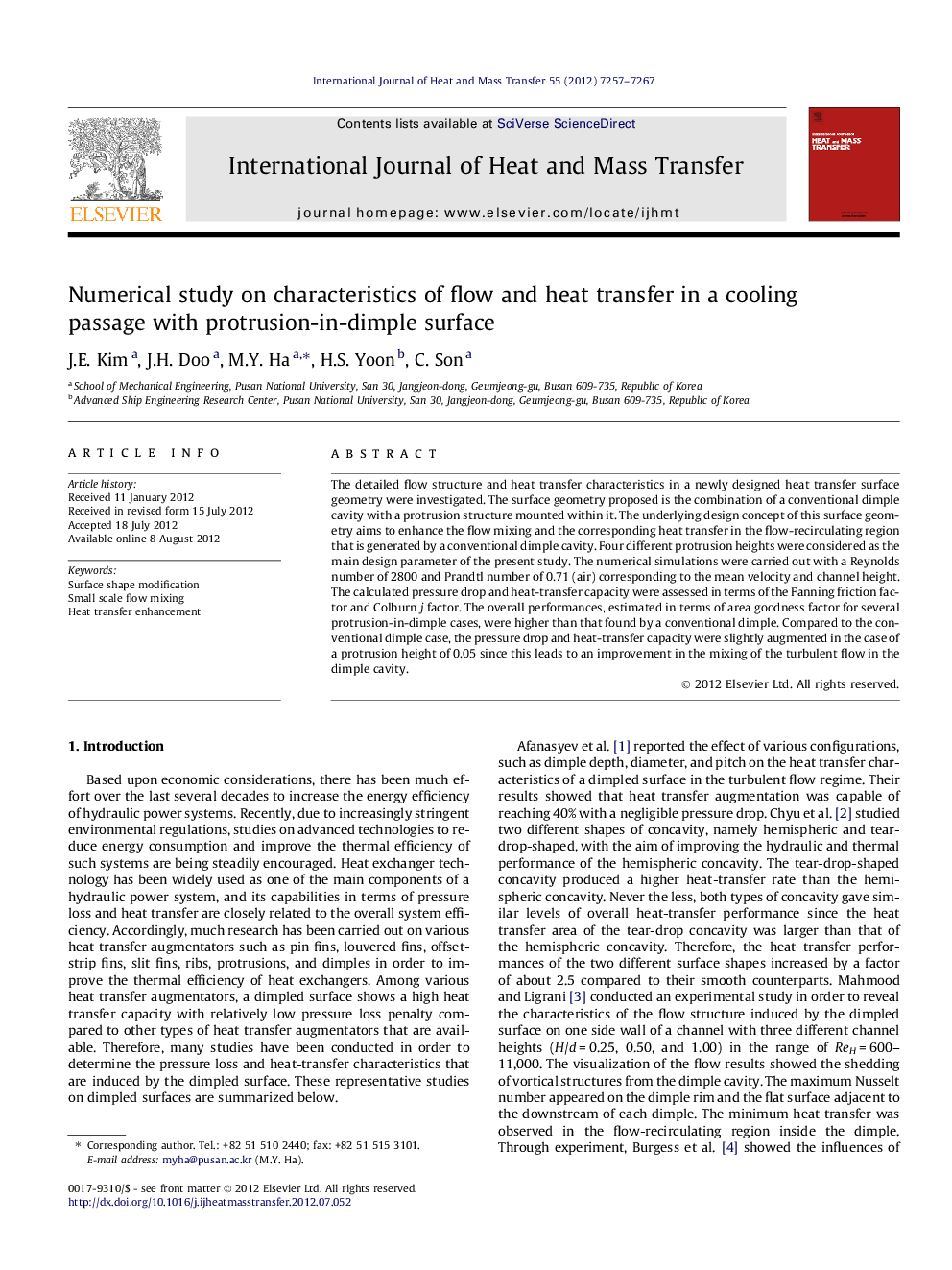| Article ID | Journal | Published Year | Pages | File Type |
|---|---|---|---|---|
| 658756 | International Journal of Heat and Mass Transfer | 2012 | 11 Pages |
Abstract
The detailed flow structure and heat transfer characteristics in a newly designed heat transfer surface geometry were investigated. The surface geometry proposed is the combination of a conventional dimple cavity with a protrusion structure mounted within it. The underlying design concept of this surface geometry aims to enhance the flow mixing and the corresponding heat transfer in the flow-recirculating region that is generated by a conventional dimple cavity. Four different protrusion heights were considered as the main design parameter of the present study. The numerical simulations were carried out with a Reynolds number of 2800 and Prandtl number of 0.71 (air) corresponding to the mean velocity and channel height. The calculated pressure drop and heat-transfer capacity were assessed in terms of the Fanning friction factor and Colburn j factor. The overall performances, estimated in terms of area goodness factor for several protrusion-in-dimple cases, were higher than that found by a conventional dimple. Compared to the conventional dimple case, the pressure drop and heat-transfer capacity were slightly augmented in the case of a protrusion height of 0.05 since this leads to an improvement in the mixing of the turbulent flow in the dimple cavity.
Keywords
Related Topics
Physical Sciences and Engineering
Chemical Engineering
Fluid Flow and Transfer Processes
Authors
J.E. Kim, J.H. Doo, M.Y. Ha, H.S. Yoon, C. Son,
